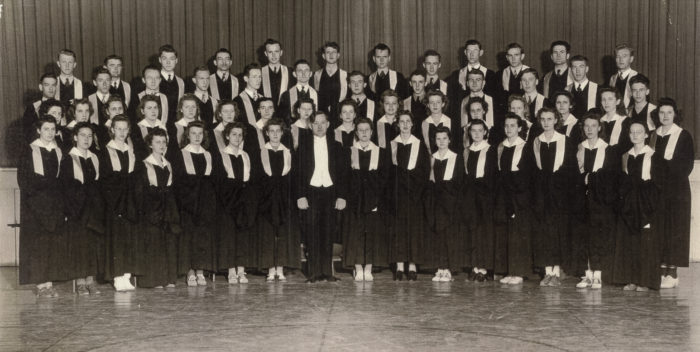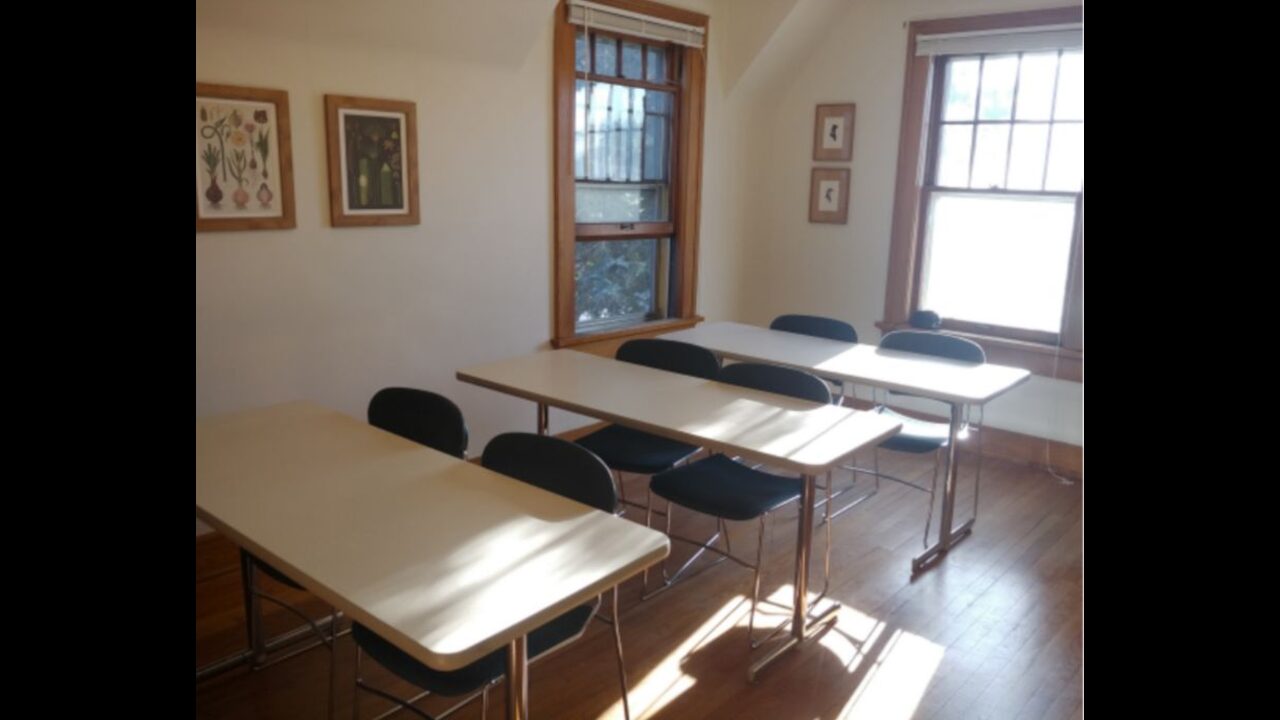The History of Music at Concordia
The University A Capella Choir 1941-42, its third academic year in Concordia’s music department. Photo courtesy of Jerry Pfabe and Concordia University archives.
- By April Bayer
Concordia has seen a variety of instrumental and choral ensembles during its 125-year history, and each one has shared a single mission: to give praise and glory to God through music.
Music lessons have been a part of Concordia’s curriculum since its founding in 1894, when the school’s first president, George Weller, recruited Herman Martin, a teacher from St. John Lutheran School, to teach piano to the first class of about a dozen students. In the following years, additional full-time faculty joined Weller, and singing, violin, organ and music theory were added to the curriculum. Violin continued to be a required course for several years.
Professor Karl Haase became Concordia’s first full-time music professor in 1906 when the school added its first two-year teacher training program. Haase organized the school’s first band, which originally consisted of the only four instruments available on campus–a B-flat cornet, an E-flat cornet, an alto saxophone and a snare drum. A local businessman named Carl Seidel later arranged for the purchase of 12 more instruments, and the band began performing at local events throughout the year.
Concordia’s first vocal ensemble, a men’s choir, was established in 1913, and the university amassed a sizable orchestra by 1914.
Other instrumental groups over the years included the Peptones, a small pep band organized in the 1940s which played for football and basketball games, the Recorder Society in the 1960s and 1970s, a brass choir and jazz ensemble in the 1970s, and an orchestral group formed in 1976 known as the Collegium Musicum, which played older instruments like the sackbut, zink, viol de gamba and natural trumpet.
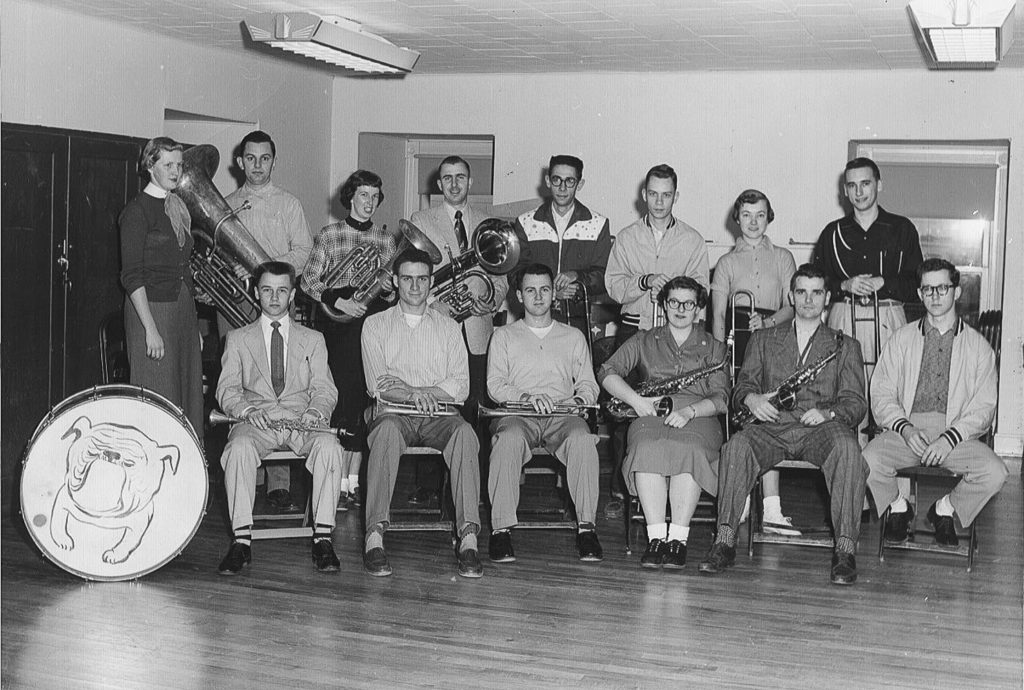
The Peptones pictured with their instruments, including a bass drum with a Concordia bulldog drawn on it. Photo courtesy of Jerry Pfabe and Concordia University archives.
Today, Concordia boasts several instrumental groups, including its Wind and Brass Ensembles, Pep Band, and Symphonic Band, which was formed in 1906 and is the longest continually-running musical ensemble at Concordia.
One of Concordia’s most well-known vocal groups is the internationally-recognized University A Capella Choir which was formed during the 1938-39 academic year by its first conductor, Dr. Theodore Stelzer.
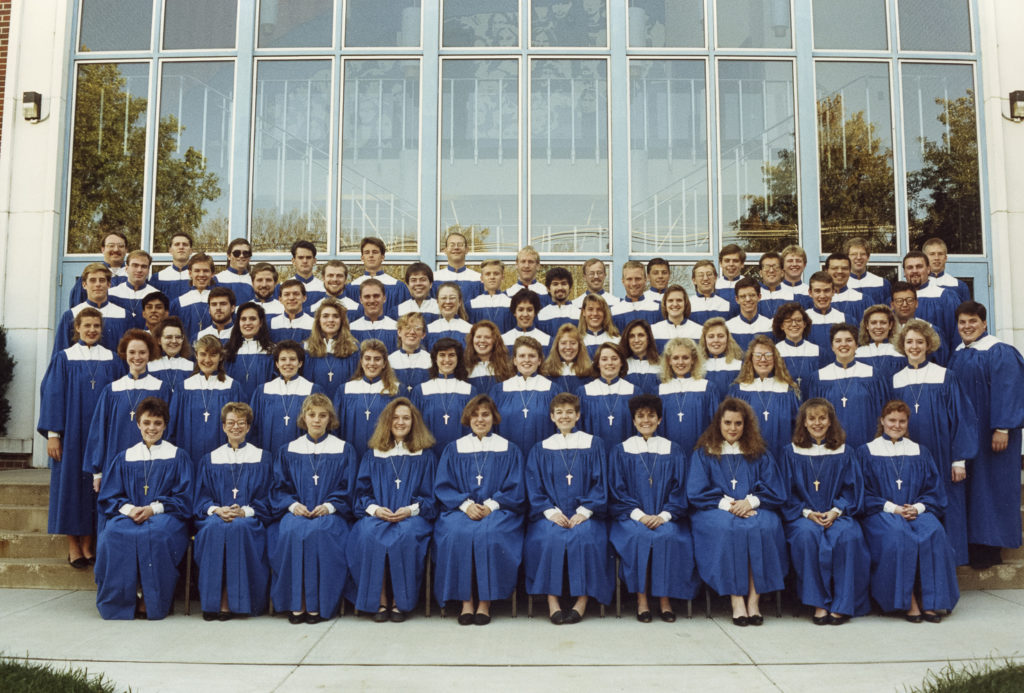
1991-92 University A Capella choir pictured outside of the Music Building. Photo courtesy of Jerry Pfabe and Concordia University archives.
The choir completed its first tour throughout Nebraska in 1939, visiting places like Omaha, Norfolk, Grand Island, Columbus, Lincoln and York. The choir began touring around the United States after 1940 and completed its first international tour in 1961.
The group has been under the leadership of four conductors during its 80-year history, including Stelzer, Dr. Paul Rosel, Associate Professor Emeritus of Music Edmund Martens, and its current conductor, Professor of Music Dr. Kurt von Kampen.
Von Kampen said the group was originally called the A Capella Choir because the group was meant to perform unaccompanied, but that vision changed a little over time with each new conductor.
“Now the group performs about half unaccompanied and half with a variety of instruments,” von Kampen said in an email interview. “There was once a common thought that music sung ‘a capella’ was superior to music with instruments because the singers didn’t need any help. That is mostly gone now because instruments like the piano are not seen as accompanying forces but rather an equal voice in the collaboration.”
Since 1939, the A Capella Choir has sung in 42 states and 25 countries, including their most recent international trip to South Africa in 2017.
Some of the choir’s accolades include the Gold Medal for performance at the 12th annual Australian International Music Festival in 2001 and a spot in the winner’s circle at the 42nd annual International Choral Competition in Spittal an der Drau, Austria.
Concordia has had several vocal ensembles over the years, including a singing and dancing group called Small Majority in the 1960s and 1970s, an open group called the Concordia Chorale, and the Concordia Singers, a select group formed in the 1950s who performed sacred choral music and assisted with worship services. Professor Emeritus of Music Dr. David Held conducted the group from his arrival at Concordia in 1979 until it disbanded after his retirement in 2000.
“I really enjoyed the group to no end,” Held said. “They worked very hard. They sounded very good.”
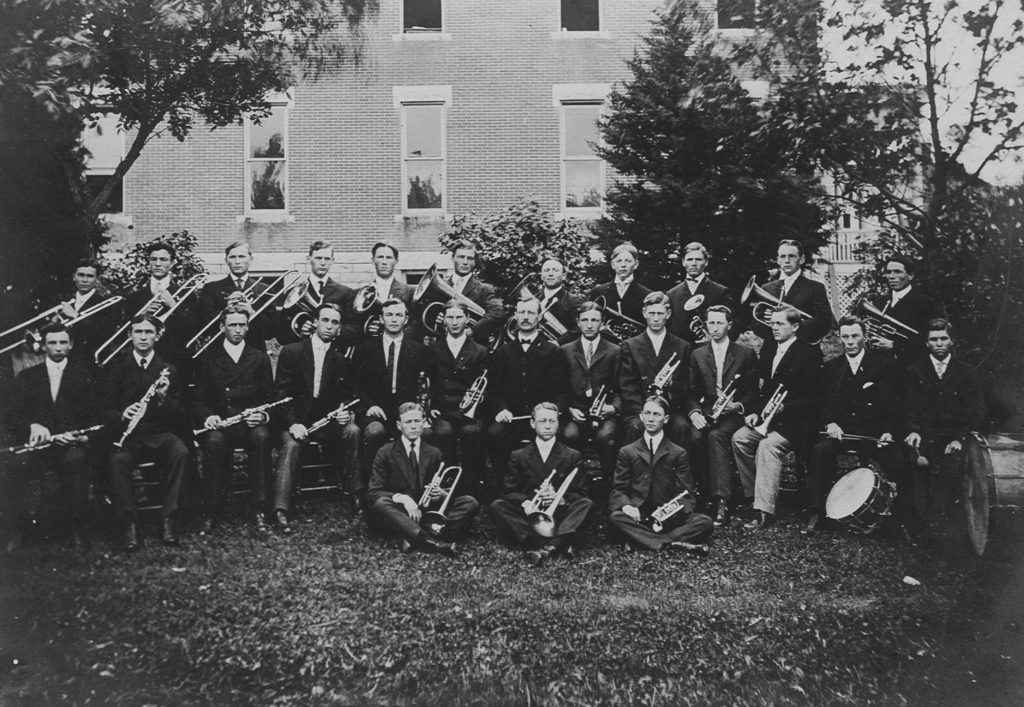
Concordia’s band in 1906 gathered outside of Founder’s Hall. Photo courtesy of Jerry Pfabe and Concordia University archives.
Held said one of his favorite memories of teaching was touring with the Concordia Singers, especially during Holy Week.
“At an Easter Vigil service in Cedar Rapids, Iowa, there was darkness after all the candles were put out,” Held said. “Then one candle was brought in, and we sang a composition that spoke of the hope of the resurrection. We left the service in darkness…nobody said a word. Usually there was banter, but it was complete and utter silence. That’s the power of music.”
The most recent changes to Concordia’s choral program included a restructuring of the vocal ensembles in 2017 to include two auditioned ensembles, one for men, the Male Chorus, and one for women, Cantamus, whose name is derived from the plural form of the Latin verb “to sing.” A new group, the Mixed Chorus, was also added in 2017. Mixed Chorus is a non-auditioned choir open to both men and women.
Another type of ensemble that has grown over the years at Concordia is its handbell choirs. Held played a major role in starting the university’s first group of ringers after realizing that the music department had access to three or four octaves of handbells but had no choir to play them.
Held directed the handbell choirs from 1979-2000, and they were later taken over by their current conductor, Professor Jessica Kite. Handbells were not originally a select group, but as interest grew, handbells eventually expanded to two auditioned choirs.
“(Professor Kite) had been in handbell choir, and she has really developed that group well,” Held said. “They play outstandingly well.”
In the past decade, the music program has been accredited by the National Association of Schools of Music and expanded to include over 325 students participating in various ensembles as well as over 70 music majors, the largest number in the school’s history. The music department also grew with the addition of the Music Therapy program, the only one of its kind in the state of Nebraska.
Other recent developments include a full-tuition scholarship competition for high school seniors and an initiative to eventually replace all of the department’s pianos with Steinway pianos.
“We strive for excellence in the musical arts as a way to honor God,” von Kampen said. “The art of making music is very important to the music faculty, staff and students, but it doesn’t supersede our calling to give to God our very best, so that is ultimately what motivates us.”


